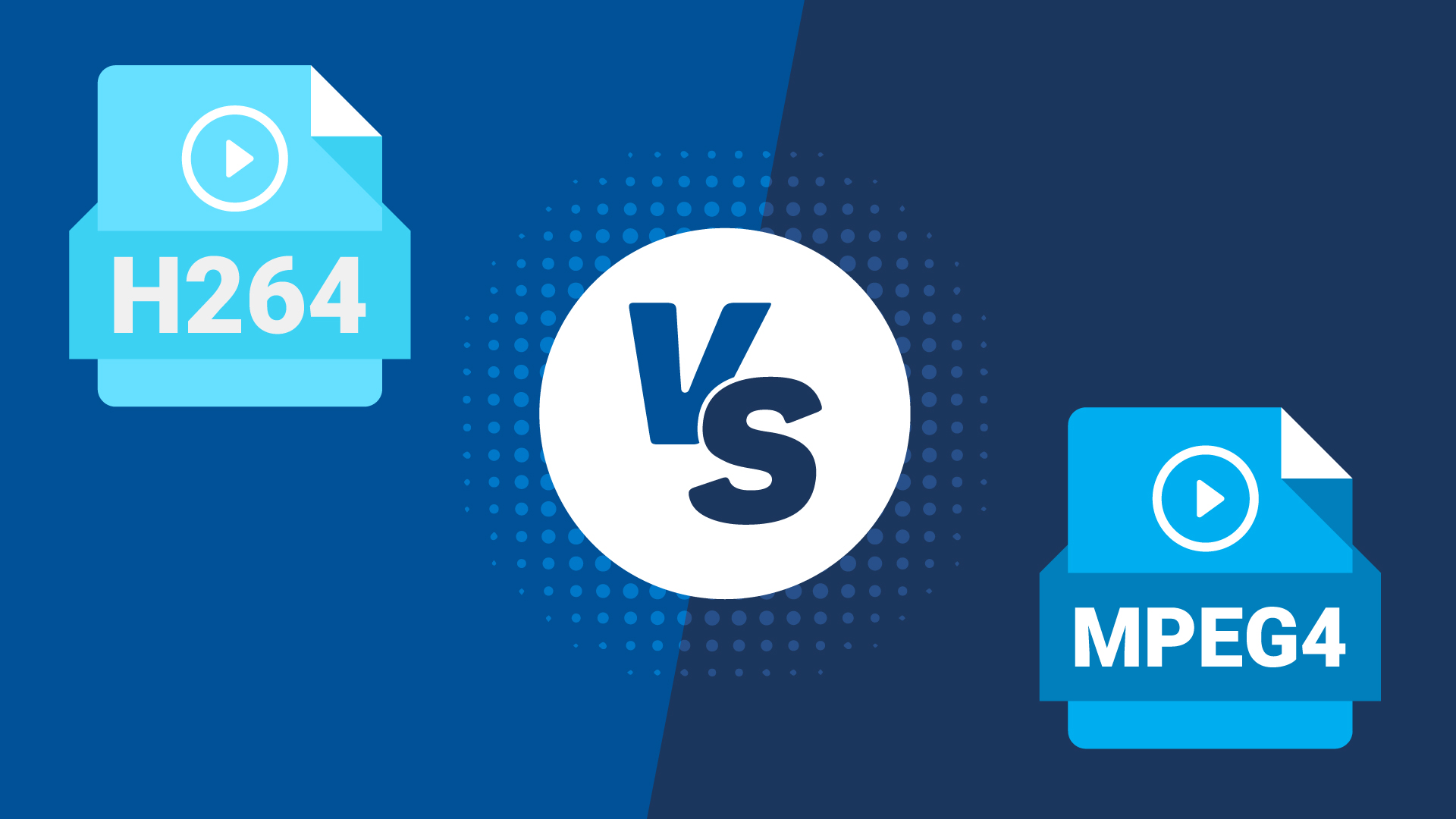The reason why H.264 is popular is that it can encode DVD-quality images at a fraction of the bandwidth required by previous video compression techniques. Not to mention that the licensing fees for software and hardware manufacturers are affordable.
Let’s look back at the evolution of video coding to understand how and why H.264 was created.

At first, the ISO Moving Picture Experts Group (MPEG), the International Telecommunications Union (ITU), and the Video Coding Experts Group (VCEG) created their own specialized standard for compression technology (codec). The MPEG created MPEG-1, MPEG-2 (DVDs), and MPEG-4, with a focus on supporting companies that develop consumer products.
On the other hand, the ITU VCEG created H.261 and H.263 using first-generation video conferencing solutions for the telecom industry.
You might naturally think that H.264 is just another video compression technique from the ITU, but it’s also called MPEG-4 Part 10. The initial MPEG-4 we used to know is officially labeled MPEG-4 Part 2.
Because video experts from ITU VCEG and MPEG started working together as the Joint Video Team, they decided to use both names, while most people just call it H.264. Here’s a quick timeline of the events:
• 2001: Joint Video Team was formed by joining members from both ITU VCEG & ISO MPEG
• 2003: Publication of the first version ITU H.264 / ISO MPEG-4 Part 10 AVC (Edition 1)
• 2004 to 2021: Publication of 13 editions of H.264 to add new functionalities, resolutions, and framerates
The objectives behind H.264
The initial mandate of this video coding group was to create a flexible standard suitable for the telecom and broadcast industries. The main objectives were:
• Improve video quality vs. existing standards
• Reduce bandwidth by 50% compared to MPEG-4 Part 2
• Design for internet streaming as well as high-definition video
• Include built-in support for robust transmission
When we look at the industry today versus what it was in 2001, we can confirm that the goals were achieved. For example, H.264 transmits video from a solar-powered hunting camera over a cellular network to a movie streamed online for your 4K home cinema.
What makes H.264 so popular?
Supports new technologies
In the last 20 years, the video streaming industry emerged, and H.264 was able to constantly adapt and support new technologies. Different editions of H.264 added support for 4K and 8K resolutions, provided performance at 120 frames per second, and offered higher color definition to support the industry.
Benefits companies worldwide
The H.264 codec is not free to use for company-generating revenues, but the business model was designed to stimulate the largest possible distribution of video decoders in commercial products. Companies like NVIDIA and ATI started including H.264 decoders in most video cards. Google, Microsoft, and Apple also included H.264 decoders in their browsers.
Offers scalable video coding
Another innovative feature of H.264 is the concept of scalable video coding (SVC). It’s used in video conferencing systems and video broadcasting or sharing platforms to support users with different network quality or resolutions.
Instead of encoding the same video four times to support four different networks with distinctive resolutions, SVC supports the concept of layers. The base layer contains the lower-resolution stream, and each extra layer increases the resolution, the quality, or the frame rate.
A user joining a call via a poor cellular network will receive only the base layer for a resolution of 240 lines, while someone using a fiber optic network will receive all four layers to get the full 1080px resolution.
H.264 hardware acceleration
In the early days of H.264, one challenge was the CPU required to encode and decode H.264.
Today, thanks to mobile phones that natively encode H.264 videos, encoding video in H.264 is no longer rocket science. IP camera manufacturers have many competitively priced options to choose from when selecting the video chip they want to use in their new IP camera.
On the decoding side, video card manufacturers can decode a decent amount of H.264 streams without consuming the CPU from the host computer. This benefits the security industry by allowing the ability to view multiple cameras simultaneously using one computer. Of course, high-end video cards will decode more simultaneous video streams than low-end video cards.
What about H.265?
H.265 is also a joint effort between ITU VCEG and the ISO MPEG. Its second name is MPEG-H Part 2. The H.265 HEVC standard was first published in 2013 and is designed to be 25% to 50% more efficient than H.264, especially with higher resolutions such as 4K and 8K. But today, H.264 remains the most popular video compression used.
H.264 in the security industry
H.264 is the most popular video compression type in the video surveillance industry. More and more security cameras support H.265, but it requires drastically more processing power to decode H.265 and reduces the number of cameras you can see at once.
When evaluating different IP cameras, always remember that codec specifications (H.264, H.265, MPEG-4) define the bitstream format for video decoders and not the encoding process. Therefore the quality of the video is not guaranteed by the standard. Two manufacturers might support the same H.264 profiles and features, but the picture quality and bitrate might differ.
We always recommend trying different camera manufacturer brands in their environment or referring to some tests done by independent analysts.
